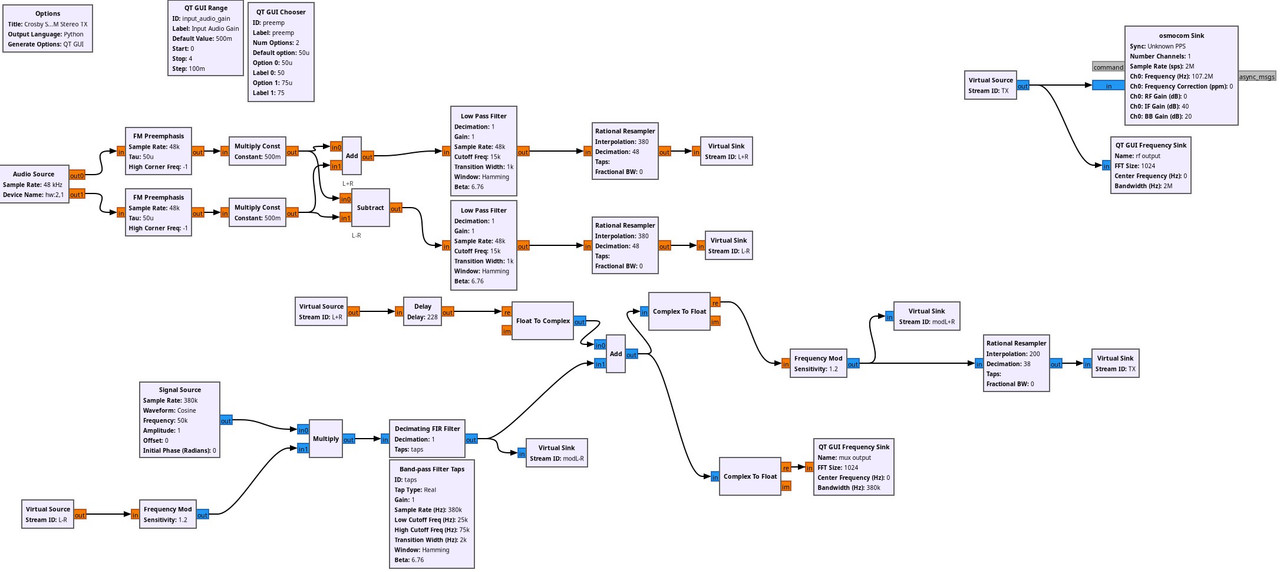Post
by Albert H » Sat Apr 27, 2024 8:18 pm
The Crosby System had issues with mono compatibility - many of the domestic receivers back in those days had IF bandwidths that were exceptionally wide (which is partly why the BBC VHF services were so widely spaced in frequency), and their selectivity was poor. There were also issues with maintaining the phase of the difference subcarrier, which could lead to a less than stellar stereo imaging. Also, it required larger channel bandwidths.
The Zenith GE system was a reasonable compromise. It wasn't ideal, but could be made to work pretty well with quite minimal circuitry. My very first home-brewed stereo coder had just four transistors in the whole thing, and gave a reasonable account of itself. My subsequent designs improved vastly on this early, crude approach, and later on, I designed stereo coders for a couple of major manufacturers.
My favourite coder - ever - was one based on the 1496 double-balanced modulator IC. I used the sinx² identity to generate the 38 kHz subcarrier from a very stable 19 kHz sinewave source, and then used another 1496 as the modulator for the "side" (difference) signal. The summing and differencing was done with op-amps, and I included several stages of Bessel filtering (and 19 kHz notches) to roll off the audio frequency response at 15 kHz. With really careful alignment, I could get >56 dB channel separation, and very low distortion. There was an output filter to ensure that no spurious products from the mixing process could leak out, but when correctly aligned, I couldn't measure any spurii at all.
The only (minor) downsides of the design were the very critical alignment for best results, the expense of the parts (there were a lot of them!), and the less than perfect noise performance - the signals fed to the double-balanced modulators had to be at pretty low levels to prevent distortion artefacts, and quite a lot of gain was required afterwards to get the composite multiplex signal up to sufficient levels to feed to the transmitters of the day. The process of attenuation and re-amplification tended to add noise. I was largely happy with the quality of the coder, but there was always a nagging feeling that I couple have done the double-balanced modulators differently (without using the manufacturer's really accurately trimmed parts), though any other solution would require even more alignment!
My old pal Trevor Brook published a somewhat simplified version of the circuit in Wireless World (which he'd developed separately - he'd tried a similar approach to mine), and his company (Surrey Electronics) made his version of the coder for a few years in the '70s and '80s.
Other manufacturers made similar designs too.
The later switching coders were less than ideal, but some of the results from them could be amazing. The NRG Pro III coder and the Pro IV coder (my design) gave great results for quite minimal outlay.
"Why is my rig humming?"
"Because it doesn't know the words!" 



